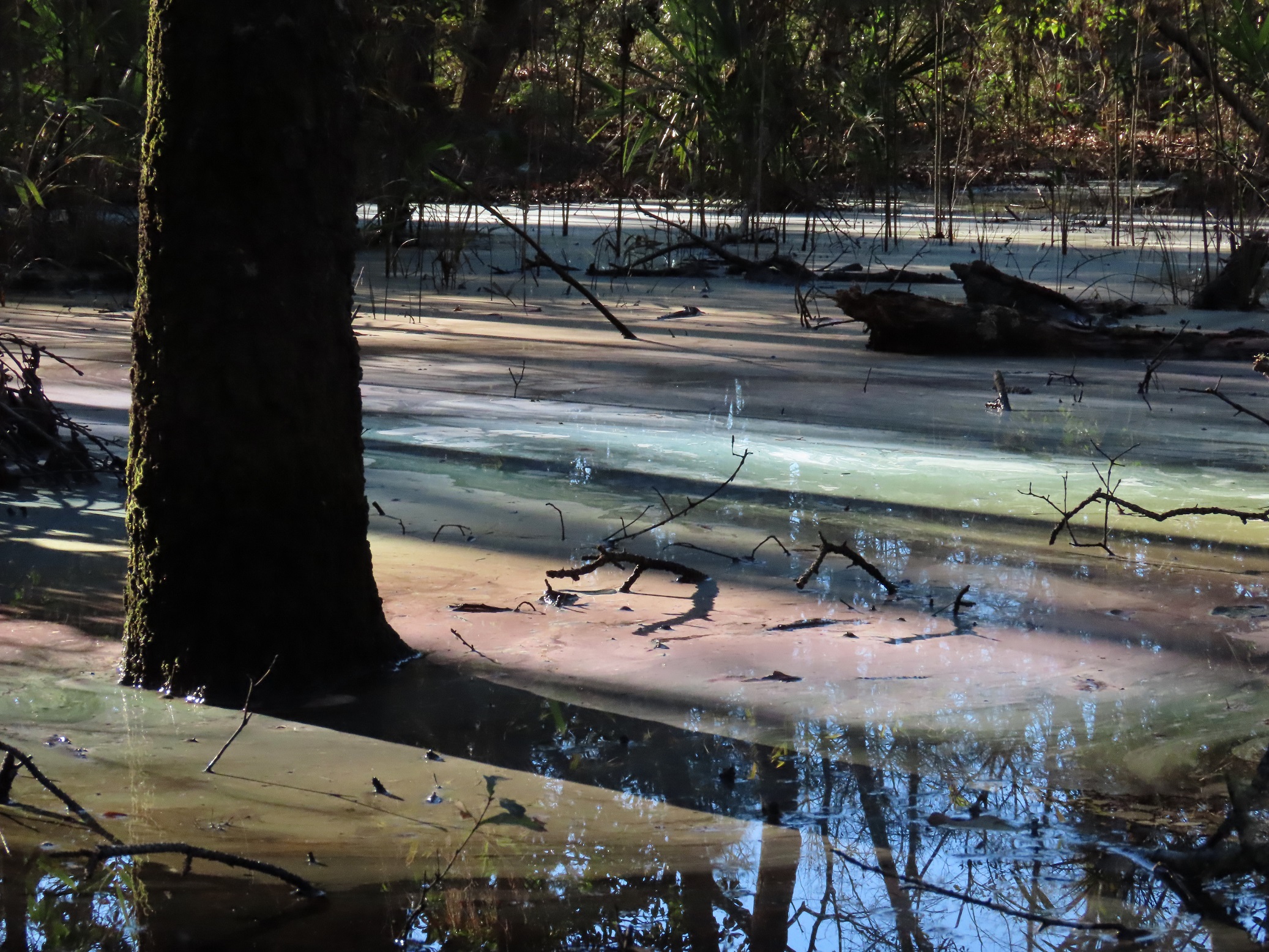


This week for Flora and Fauna Friday we’re talking about something a little off topic, an ecological phenomenon rather than a specific organism; this week we’re in awe of the Rainbow Swamp.
Cruising down a causeway a kaleidoscopic glimmer grabs your gaze. A truly Technicolor tapestry torn between the tree trunks. You’re beholding the rainbow swamp. Every winter our swamps and bottomlands are blessed by this truly beautiful chromatic aberration of a reflected refraction. This phenomenon arises from a complex interplay of geology, hydrology, meteorology, astronomy, ecology, and biochemistry that all together lead to our Lowcountry swamps being bathed in a blazing spectral display.
Let’s start with the geology and work our way up. Our swamps and bottomlands are found in low elevation areas called floodplains. Their low elevation means that they naturally have a high water table and that rainfall from surrounding areas flow into these floodplains. Floodplains have overtime accumulated a clay substrate which is not particularly pervious to water. Our bottomlands are the lowest areas of the floodplain which are either inundated year-round or fill seasonally. Species of trees and shrubs that can tolerate this long term flooding colonize these areas and transform it into a swamp, a type of forested wetland. As the trees grow and photosynthesize, they pull water from the swamp and transpire it up into the atmosphere to cool themselves down. Thus in the spring and summer, the water level is lowest in a swamp due to evaporation from our hot summers and the transpiration of the overarching trees. Some swamps will go totally dry. However, tropical rains will often fill them back up during late summer and fall. In late fall these wetland trees go dormant and shed their leaves into the water below. As winter rains roll through our state, they fill the swamps to their brim as the trees are no longer taking up water and the cold temperatures slow evaporation considerably. Beneath the water’s surface, anaerobic microbes digest the leaves and various detritus that collect on the bottom of the swamp. During this decomposition process, assorted natural oils found in the plant detritus are released and float up to the surface of the water. Due to the cold temperatures, these oils are able to collect on the water’s surface without being broken down by aerobic microbes in the water column. In slow moving swamps and ephemeral pools, these oils are able to accumulate into a surface film. Our climate in the Lowcountry is also warm enough that the water’s surface rarely freezes either, which would either trap the oils beneath the surface of the ice. Another key piece of the puzzle is that in the winter the sun is lower in the sky due to the tilt of the Earth’s axis. This shallow angle of the sun means the light reflected off the water’s surface is also at a shallow angle and so we can easily see it at a standing height from a distance. As mentioned before, the trees have lost their leaves as well. So the light of the sun is able to hit the surface of swamp in winter where it would be in permanent shadow during summer. As the winter sun hits the surface of the swamp, it encounters the thin sheen of natural oils that have accumulated. These oils function like a natural refractive prism, reflecting each wavelength of light at a slightly different angle which results in the full color spectrum reflecting off the water’s surface. This prismatic effect is not perfect and some unrefracted light reflects too, which is what give the rainbow swamp its characteristic pastel palette. All these different requirements have to be met in order for the Rainbow Swamp to be visible, which is what makes it a uniquely beautiful part of the Lowcountry.
The best time to see the rainbow swamp is usually nine to eleven in the morning in mid-January through February. Yet it’s intensity, appearance, and location depends greatly on the weather throughout the winter leading up to it. It can appear on practically any still body of water with a clear surface beneath a forested wetland. However, given that the sun is in the southern sky, it’s only visible in its full glory when you’re facing southward.